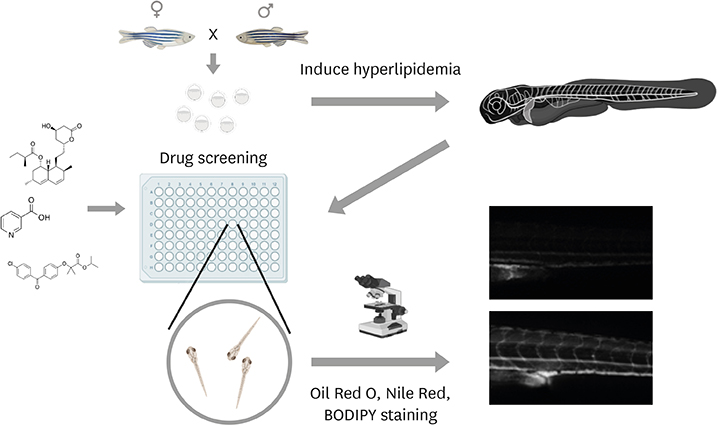Fig. 3 High-throughput drug screen using zebrafish hyperlipidemia models. A pair of zebrafish provides hundreds of eggs per week, which enables production of genetically identical individuals for high throughput screen. In addition, zebrafish larvae are small enough to be raised in a small volume of aqueous media within a single well of multi-well plate, which increases the efficacy and reproducibility of the high throughput screen. Efficacy of candidates can be verified by lipid staining such as Oil Red O, Nile Red and BODIPY staining. Combined with phenotypic resemblance between hyperlipidemic zebrafish and humans, these aforementioned attributes as a model organism have propelled zebrafish as an important alternative model to investigate pathophysiology of dyslipidemia in humans.
Image
Figure Caption
Acknowledgments
This image is the copyrighted work of the attributed author or publisher, and
ZFIN has permission only to display this image to its users.
Additional permissions should be obtained from the applicable author or publisher of the image.
Full text @ J Lipid Atheroscler

